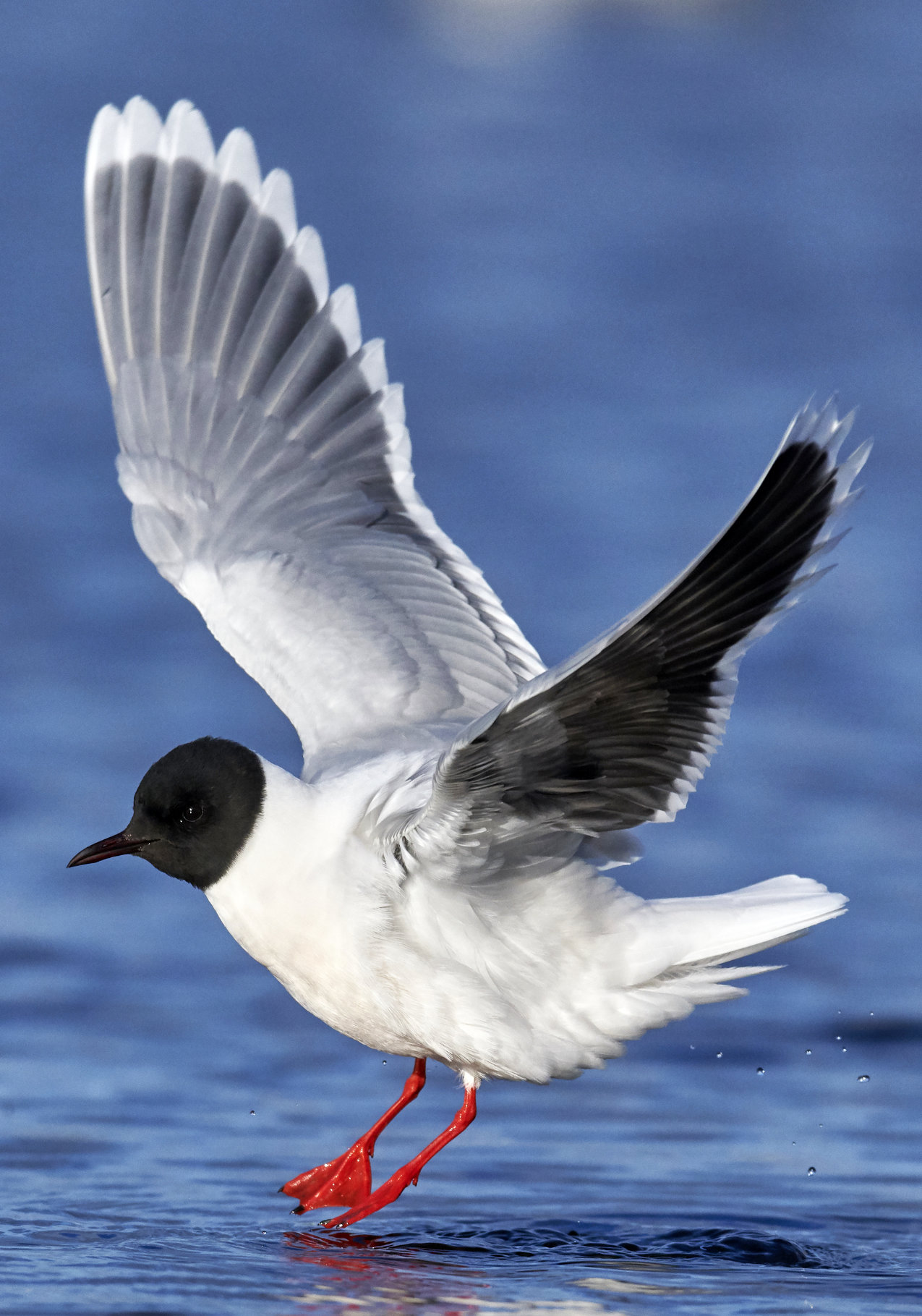
The Little Gull can be seen in our coastal areas singly or in small flocks. It is the smallest Gull in the world. Its migration and movement are still a puzzle to ornithologists, as it can turn up anywhere at any time, though it mainly winters in the Mediterranean.
True to its name, it is a petite, Tern-like Gull. In summer it has a black head, a grey back, grey wings with an obvious pale rear edge and no black on its wing tips. The underwings are strikingly dark, its legs are dark red and the bill is black. In winter, its head is white with a dark crown and a spot behind the eye, similar to the Black-headed Gull. The youngsters have a strong 'W' pattern on their wings. The Little Gull is usually silent and it flies with quick wing beats in a zigzag, Tern-like flight.

The Little Gull feeds on insects like dragonflies, mayflies, water beetles and midges in the summer and switches to fish in the winter. Like the Black Tern, it dips to take food from the surface of the water and catches insects in the air.
Little Gulls breed in northern Europe on freshwater marshes, usually in colonies. The nest is a scrape on the ground lined with vegetation. The 2-3 eggs are laid in late May or early June. Both mum and dad incubate the eggs as soon as they are laid which means they hatch at different times after 23 days. The youngsters quickly leave the nest and hide nearby where they are fed by both parents. They can fly 21 days later. The youngsters will take three years to reach full maturity and breed themselves.
The Little Gull does not normally breed in Britain. The first ever recorded was a single pair in 2016. Only 700 visit our coasts each year, so it is really lucky if you see one.
Their Latin name is 'hydrocoloeus minutus' where 'hydrocoloeus' is from the ancient Greek 'hydro' for 'water' and 'koloios' a sort of web-footed bird. The 'minutus' is Latin for 'small' (as in minute). It is the only member of the genus 'hydrocoloeus', although ornithologists think it should get the Ross's Gull as a friend.